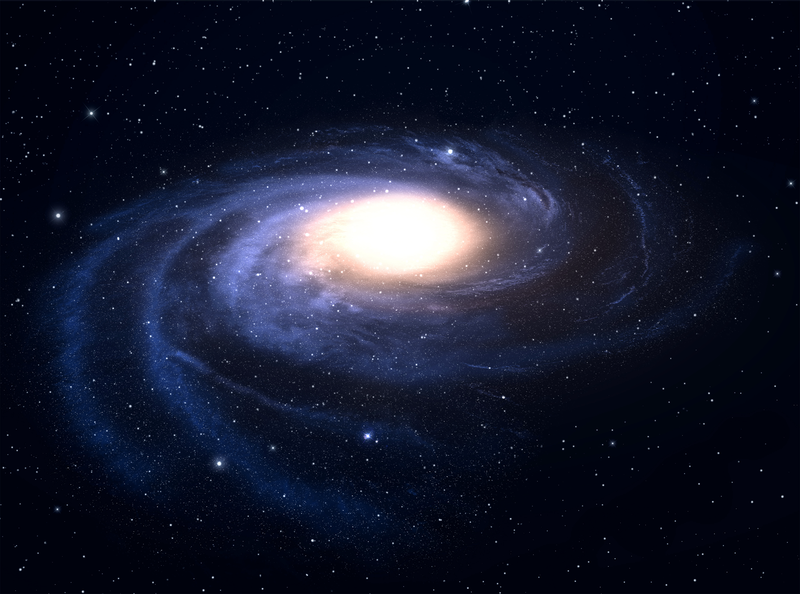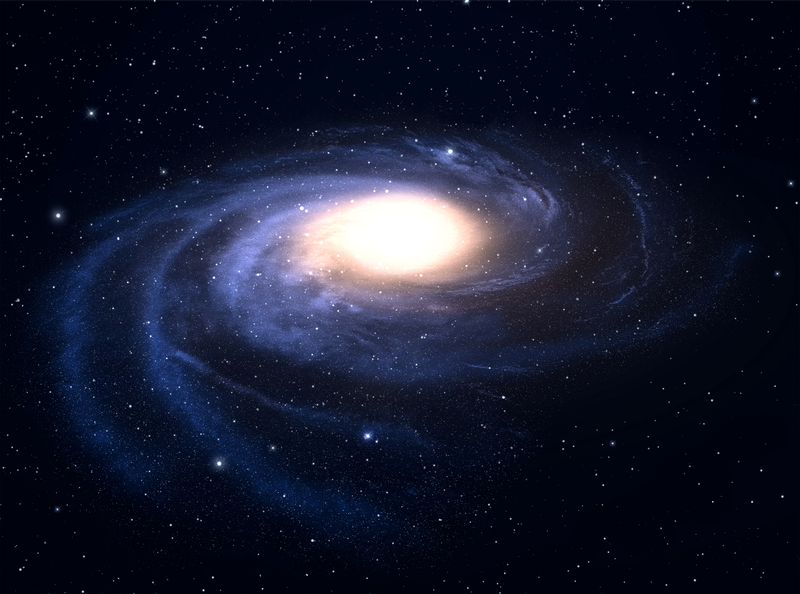Galactic Gamma-Ray Glow May Be Pulsars After All
A gamma-ray glow emanates from the center of the Milky Way, but physicists can’t agree on why. Some think it’s evidence of dark matter. Others think it’s coming from a more mundane source—rapidly spinning neutron stars called millisecond pulsars. Dark matter proponents have pointed out several problems with the pulsar hypothesis. Now, Roland Crocker of the Australian National University and his colleagues have come back with a possible solution [1]. Their simulations indicate that the signal could come from a previously ignored type of millisecond pulsar.
Since its discovery in 2008, the Milky Way’s “gamma-ray excess” has been hotly debated. First, physicists argued over whether the signal was real. Once its authenticity was established, they argued over its source. Some, including one of the signal’s discoverers, believe that the light comes from annihilating dark matter particles. Another explanation is that the gamma rays are emitted by electrons and positrons that are accelerated in the rotating magnetic fields of some millisecond pulsars.
One way to produce a gamma-ray-emitting pulsar involves “recycling.” In this scenario, an old pulsar in a binary system siphons matter from its companion star, a process that causes it to spin faster and faster. Eventually, the pulsar spins hundreds of times per second, a rate fast enough for it to emit gamma-ray radiation. Researchers think that a whole population of such recycled pulsars could be responsible for the gamma-ray excess.
This explanation has some problems. First, to account for the excess radiation, there would need to be about 1000 of these binary systems in the Milky Way’s center, but astronomers have only found 42. Additionally, the gamma-ray signals from such systems should be individually distinguishable, but the observed one comes in a diffuse haze. Crocker and his colleagues solve this problem by considering an alternative millisecond-pulsar source for the measured glow.
A white dwarf in a binary star system can turn into a pulsar by way of the same matter-accretion process as in the previous scenario. This accretion sets the white dwarf spinning. It also makes the burnt-out star so hefty that it can no longer withstand its own weight, and it collapses to form an “accretion-induced-collapse” pulsar.
Crocker and his colleagues simulated the evolution of a population of binary star systems to predict the number of accretion-induced-collapse pulsars that should currently exist in the Galactic Center. They then predicted the emitted light spectrum for these pulsars, finding that it is “a very good match to the observed findings in the excess signal,” Crocker says. He also notes that upcoming observations of the Galactic Center with the Cherenkov Telescope Array (a new, ground-based gamma-ray detector) should be able to resolve some of these pulsars, allowing them to confirm whether the team’s theory is correct.
“I think it is a nice [study] and an intriguing proposal,” says Tracy Slatyer, a physicist at the Massachusetts Institute of Technology. “It’s exciting that the [researchers] find promising near-term prospects for detecting” the pulsars.
Daniel Hooper, who discovered the gamma-ray excess, is more skeptical. “It could be part of the story,” says the physicist from the University of Chicago. But, he adds, to reproduce the signal, there would need to be hundreds of thousands of these accretion-induced-collapse pulsars. “That just doesn’t seem realistic to me.”
Crocker and his colleagues think it is. They note that stars found in the disk of a galaxy are not representative of the population of stars in that galaxy’s center. The central stars tend to be much older, so the number of accretion-induced-collapse pulsars could plausibly be much higher.
Whether or not these pulsars end up being the source of the signal, creative new explanations such as Crocker’s are helping physicists get closer to uncovering the true source of our Galaxy’s enigmatic glow. “At the end of the day it’s a good motivation to both gather more data and improve our analysis methods for searching for inner-Galaxy pulsars,” Slatyer says.
–Katie McCormick
Katie McCormick is a freelance science writer based in Sacramento, California.
References
- A. Gautam et al., “Millisecond pulsars from accretion-induced collapse as the origin of the Galactic Centre gamma-ray excess signal,” Nat. Astron. (2022).





